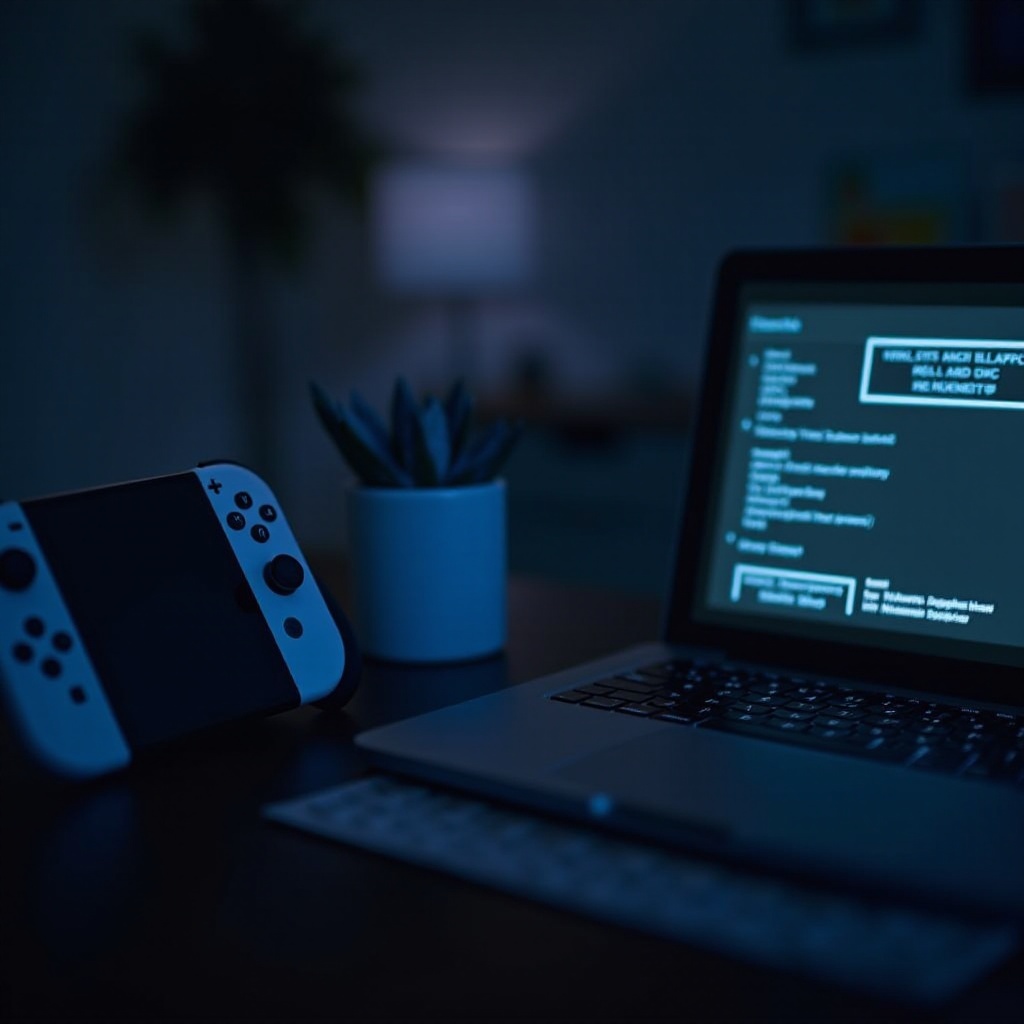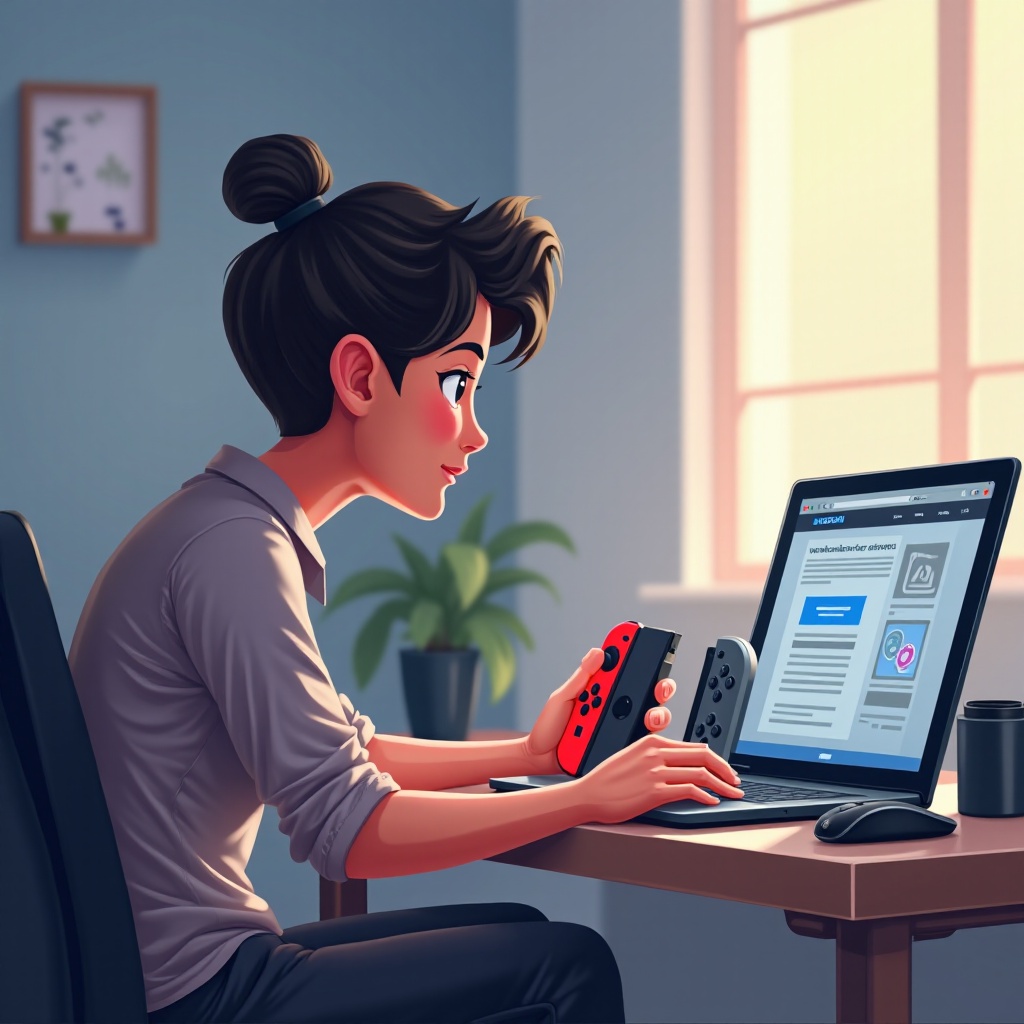Introduction
Facing connectivity problems just as you’re gearing up for an online game or attempting to download that anticipated update can be vexing. The ‘Switch not connecting to WiFi’ issue is a common hurdle for many Nintendo Switch users. Whether the root is within the console or lies with network settings, effective strategies exist to regain stable connectivity. By grasping common causes and implementing the right troubleshooting techniques, most connectivity challenges can be quickly overcome. In this article, we explore both quick and advanced methods to tackle these persistent WiFi issues.

Common Causes for WiFi Connection Problems
Before delving into solutions, identifying potential causes is pivotal. A prevalent issue arises from entering incorrect WiFi credentials, such as inaccurate passwords. Network congestion at peak times can drop connections or make the Switch struggle to connect. With modern routers juggling multiple devices simultaneously, bandwidth and device competition can strain the network. Additionally, overlooked software glitches or outdated firmware on your Nintendo Switch might contribute. By pinpointing these starting points, you streamline the process of resolving your connection issues.
Quick Fixes for WiFi Connectivity
For immediate hurdles, these uncomplicated steps can often bring relief:
- Reboot Your Network Devices
Start by rebooting your modem and router. Unplug them for roughly 30 seconds, allowing any temporary glitches to dissipate before reconnecting them.
- Double-Check Your WiFi Password
Verify that the WiFi password entered precisely matches the one configured for your network, being mindful of the case-sensitive nature.
- Ensure Your Nintendo Switch is Up-to-Date
Bugs affecting network capabilities can often be ironed out with firmware updates. Navigate to ‘System Settings’ > ‘System’ > ‘System Update’ to ensure you’re running the latest software.
These initial steps can effectively resolve minor issues, providing a seamless connection. Yet, for persistent problems, further techniques are warranted.
Delving into Advanced Troubleshooting
When initial fixes don’t suffice, consider these deeper, more technical strategies:
- Manual WiFi Configuration
Manual intervention in your network settings may prove beneficial. Access ‘System Settings’ > ‘Internet’ > ‘Internet Settings’ on your Switch, select your network, and choose ‘Change Settings’ to manually input IP addresses, DNS, and other credentials detailed by your ISP.
- Router Settings Optimization
Through a web browser, reach your router’s admin panel to modify configurations like the WiFi channel. Switch to a less congested channel to enhance connectivity and make sure SSID broadcasting is activated.
- Experiment with Alternative Networks
Connecting your Switch to a different network, such as a mobile hotspot, aids in discerning whether the problem lies within your ISP or router. This can indicate whether a localized issue exists within your network configuration.
Though requiring more detail, these techniques can address deeper connectivity issues if initial attempts fall short.

Enhancing Your WiFi Environment
Post-connection, sustainability and reliability of the WiFi signal are paramount:
- Limit Network Interference
Position your router in an open area, away from obstructions and electronics like microwaves or cordless phones which might impede signal quality.
- Strengthen Signal and Stability
For amplified signal coverage, consider a WiFi range extender or a mesh system. These solutions extend coverage reach, diminishing chances of your Switch losing its connection.
Improving your home network benefits all devices, ensuring that your Nintendo Switch maintains robust connectivity.
Seeking Professional Assistance
If all else fails, tapping into expert guidance might be your next step:
- Determine Possible Hardware Faults
Faulty hardware, such as malfunctioning WiFi modules, might be the culprit. Verify whether other devices can connect to detect a potential Switch-exclusive problem.
- Reach Out to Nintendo Support
Should hardware be suspect or if issues persist, Nintendo’s support can provide diagnostics, repair, or replacement solutions, ensuring more serious issues are handled safely.
Guidance from professionals can direct you to resolution pathways when personal efforts reach their limits.

Conclusion
WiFi snags need not be insurmountable roadblocks. Familiarity with both simple and nuanced remedies empowers you to deal with Nintendo Switch connectivity effectively. Keep your WiFi environment at optimum efficiency and stay updated with the latest software to secure seamless gaming. And remember, when self-help avenues exhaust, technical support is readily accessible to secure returns to effortless play. Incorporating these methods not only quells current problems but aids in thwarting future connectivity hiccups.
Frequently Asked Questions
Why does my Switch disconnect from WiFi after connecting?
Connection drops can result from poor signal strength, network interference, or incorrect network configurations. Ensure a stable connection by optimizing signal strength and double-checking settings.
Can WiFi extenders help my Nintendo Switch connect more reliably?
Yes, WiFi extenders can improve signal reach and strength, inherently enhancing reliability when your Switch connects to the network. They are especially useful for large or multi-story homes.
What are the best WiFi settings for Nintendo Switch connectivity?
Utilize the 5GHz frequency band for less interference, ensure WPA2-AES encryption is enabled, and avoid using congested channels. Always maintain your router’s firmware up-to-date.